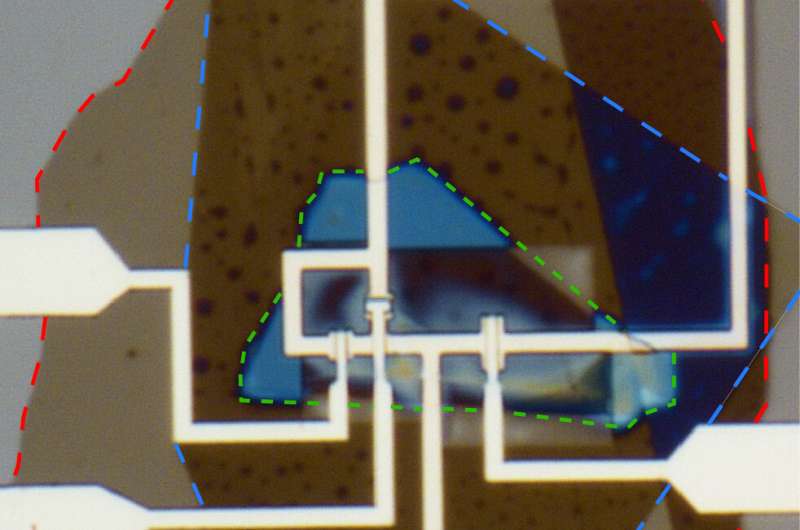
October 4, 2024 by Ingrid Fadelli , Phys.org
Collected at: https://phys.org/news/2024-10-subtle-current-phase-potential-stable.html
In recent years, quantum physicists and engineers have made significant strides toward the development of highly performing quantum computing systems. Realizing a quantum advantage over classical computing systems and enabling the stable operation of quantum devices, however, will require the development of new building blocks for these devices and other aspects underlying their correct functioning.
Researchers at Université Grenoble Alpes recently demonstrated the direct measurement of a subtle effect, namely a sin (2𝜑) current phase relation, in a graphene-based superconducting quantum interference device based on gate-tunable graphene Josephson junctions. Their method to collect this measurement, outlined in a paper published in Physical Review Letters, could contribute to the development of more stable superconducting qubits that are less prone to decoherence.
Josephson junctions, the components the team’s device was based on, link two superconducting materials together via a weak link. In quantum technology, these junctions enable the storing and processing of quantum information with minimal losses by allowing current to flow through devices with no resistance, a specific property of superconductors below their transition temperature.
As part of their recent study, the researchers at Université Grenoble Alpes set out to directly measure how this flow of current depended on the difference in the superconducting phase between the two sides of the gate-tunable graphene-based Josephson junctions in their device. This measurement is of key importance, as it can be leveraged to develop superconducting quantum circuits with carefully tailored properties.
“Looking at the existing literature, we realized that while the community has shown in recent years a growing interest for sin(2𝜑) current phase relations in superconducting circuits, there was no direct measurement of such relation in currently used devices,” Julien Renard, senior author of the paper, told Phys.org. “We decided to design an experiment that would enable this measurement, yielding a direct visualization of such current phase relation.”

In their experiment, Renard and his colleagues measured the voltages in a graphene superconducting quantum interference device they developed as a function of externally controlled parameters, such as a magnetic field. Their setup relied on an advanced method to simultaneously control and read the current phase relation of a pair of Josephson junctions in their device.
“The magnetic field allows [us] to vary the phase in the superconducting interference device,” explained Renard. “The measured signals, on the other hand, allow to extract the current. This is how we can directly measure the current phase relation of the device.”
The direct measurements collected by this research team showed that their device can behave as a sin(2𝜑) element. This essentially means that the current flowing through their device follows a distinct pattern, represented by sin(2𝜑), which is not influenced by the simpler sin(𝜑) pattern characterizing the flow of current through more conventional Josephson junctions.
The experimental methods employed by Renard and his colleagues and the distinct current phase relation they observed in their device could soon contribute to the advancement of quantum computing technologies. In their next studies, the researchers plan to build on their recent paper with the aim of developing new quantum bits that are protected from decoherence.
“We showed that combining two graphene Josephson junctions in a superconducting quantum interference device, we can obtain a sin(2𝜑) current phase relation thanks to the control of interference effects between Cooper pairs with a magnetic field,” said Renard. “Such graphene superconducting quantum interference device could be the building block of a future generation of quantum bits, protected from decoherence. We will now work at finding the appropriate circuit geometry to build such quantum bit.”
More information: Direct measurement of a sin(2𝜑) current phase relation in a graphene superconducting quantum interference device. Physical Review Letters(2024). DOI: 10.1103/PhysRevLett.133.106001. On arXiv: DOI: 10.48550/arxiv.2405.13642
Journal information: Physical Review Letters , arXiv

Leave a Reply